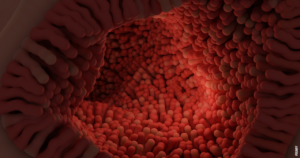The Amazing Engine of Life: The Heart Muscle
The heart, often referred to as the engine of life, is a remarkable organ that tirelessly beats to keep us alive. But have you ever wondered how this incredible machine actually works? In this article, we will explore the inner workings of the heart muscle, also known as the cardiac muscle, and delve into its extraordinary functions and adaptations.
The Anatomy of the Heart
Before we dive into the intricacies of its function, let’s first understand the anatomy of the heart. The heart is a muscular organ located in the chest, slightly left of the center. It is roughly the size of a clenched fist and is composed of four chambers: two atria and two ventricles.
The Pumping Action
At the core of the heart’s function lies its remarkable ability to pump blood throughout the body. The heart muscle contracts and relaxes in a rhythmic pattern, creating what we know as the heartbeat. This pumping action is vital for maintaining blood circulation, delivering oxygen and nutrients to all the cells in the body and removing waste products.
Electrical Signaling
So, how does the heart muscle know when to contract and relax? The answer lies within the electrical signaling system of the heart. The heart has its own internal electrical system, which controls the timing and coordination of its contractions. This system begins with the sinoatrial (SA) node, often referred to as the natural pacemaker of the heart. The SA node generates electrical impulses that spread through specialized pathways, causing the heart muscle to contract in a synchronized manner.
The Cardiac Cycle
The cardiac cycle refers to the sequence of events that occur during one complete heartbeat. It can be divided into two phases: diastole and systole. During diastole, the heart muscle relaxes, allowing the chambers to fill with blood. This is followed by systole, where the heart muscle contracts, pumping the blood out of the chambers and into the arteries.
Post
Post
Adaptations of the Heart Muscle
Given its vital role, the heart muscle has undergone remarkable adaptations to ensure its continuous function. One of the most notable adaptations is its endurance. Unlike skeletal muscle, which can fatigue relatively quickly, the heart muscle is designed to withstand constant contractions without tiring. This is achieved through a rich network of blood vessels that supply the heart muscle with oxygen and nutrients.
Additionally, the heart muscle has unique structural features called intercalated discs, which allow for rapid electrical conduction between cardiac cells. This ensures the synchronized contraction of the heart and maintains its efficiency as a pump.
Conclusion
The heart muscle is an extraordinary organ that powers our existence. Its intricate structure, electrical signaling, and rhythmic contractions all work together to ensure the continuous circulation of blood throughout our bodies. Understanding the inner workings of the heart muscle not only deepens our appreciation for its remarkable abilities but also highlights the importance of taking care of this vital organ.



